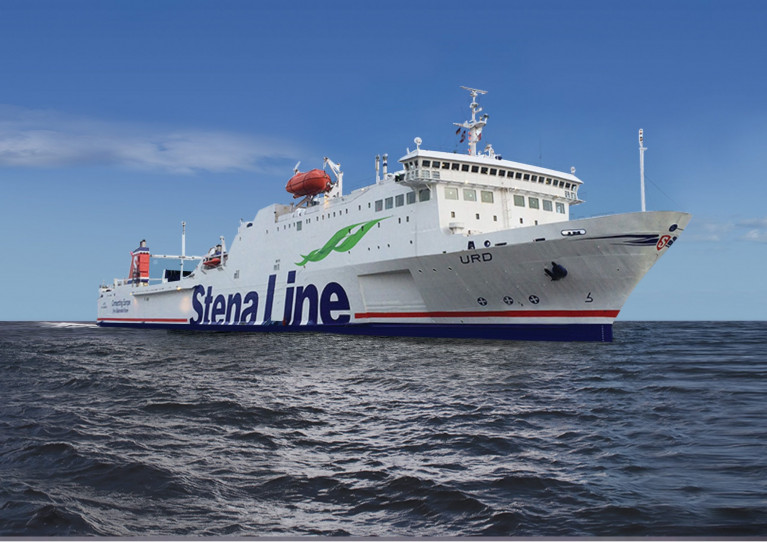Another Finnish port in the news (see story) involves Hanko from where Stena Line is to enter the Nordic state's market with a new Baltic Sea route to Nynäshamn in Sweden, the operator's homecountry, writes Jehan Ashmore.
The new Sweden-Finland route starts from February 2022, and will see Stena's launch of the Hanko-Nynäshamn route as the next step in the Gothenburg based companies ambition to further strengthen their position in the Baltic Sea.
Nynäshamn is part of the Port of Stockholm whose Stockholm Norvik Port, is a brand new container and RoRo terminal where the Stena Line service is to start with a single ship, the ro-ro freight-ferry Urd. The former Seafreight Highway, Afloat adds served SealinK British Ferries Dun Laoghaire-Holyhead route albeit for a stint in 1988 and following in the previous year between Dover-Dunkerque.
On a related note to another former Irish Sea ship, Sealink/ British Rail's custom (Danish) built St. Columba (renamed twice) until 1996 when replaced by Stena's HSS fastferry and subsequently sold overseas, has finally gone to the shipbreaker's in Pakistan at the end of last month. Afloat will have more on the popular Ireland-Wales ferry that served for almost two decades.
Returning to Stena's Urd's new year Baltic Sea role, this will involve a roster of three weekly departures in each direction. Sailings, however will be stepped up in May with sister, Stena Gothica, which will then enable daily departures from both ports allowing for the smooth loading and unloading during full day port stays in Finland's most southerly port.
Stena's deployment of the dedicated freight RoPax pair, each with for a capacity of 1,600 lane meters and 186 passengers is a clear committment of investment in the new service to accommodate an increasing demand of freight customers and seamless transportation in the Baltic Sea and beyond.
The addition of the Ropax Pair follows Stena's expanding Baltic Sea operations, including the deployment of two long newly built E-Flexers on the Nynäshamn-Ventspils route. Also the large capacity improvement on Karlskrona-Gdynia as Afloat also reported the lengthened pair of Stena Scandica and Stena Baltica, previously from Belfast-Birkenhead (Liverpool) route.
By extending the network to Finland, Stena say this is to further improve and expand the most comprehensive, efficient, and integrated ferry network in northern Europe.
The new Baltic Sea route will compliment to existing routes to Latvia, all the Nordic nations with the exception Afloat highlights of Norway, as the route to Denmark across the Skaggerak between Oslo-Frederikshavn closed in May of last year.
Stena cited that the tough decision to permanently close the Norway-Denmark route was a measure made in response to the global COVID-9 crisis that has had a substantial effect on their passenger operations.


























































